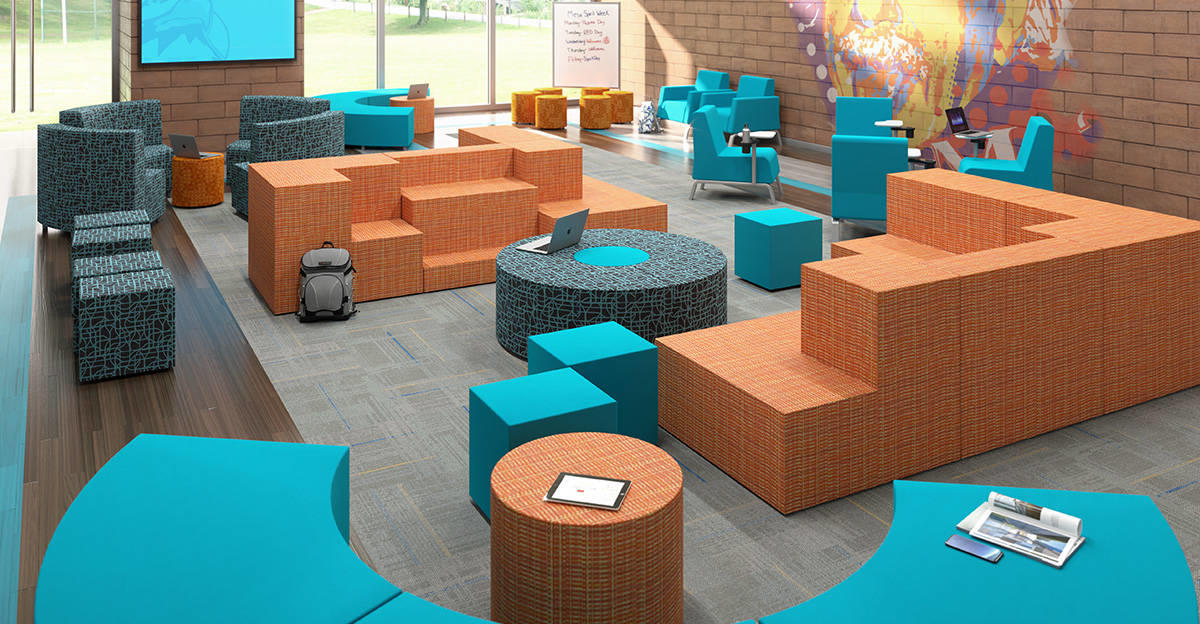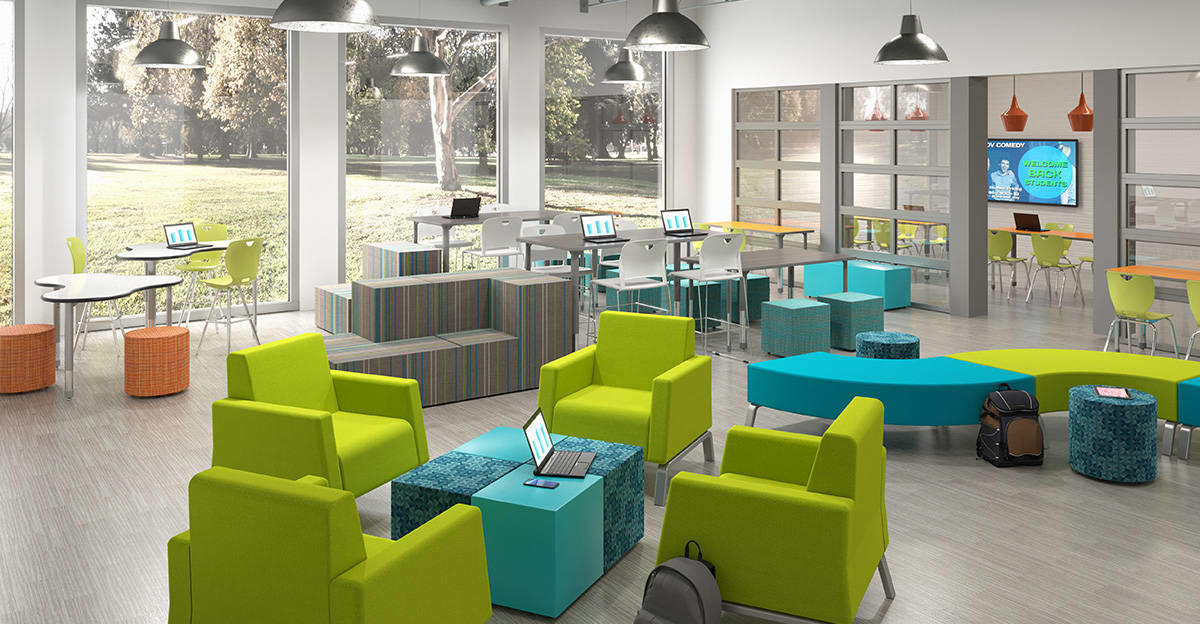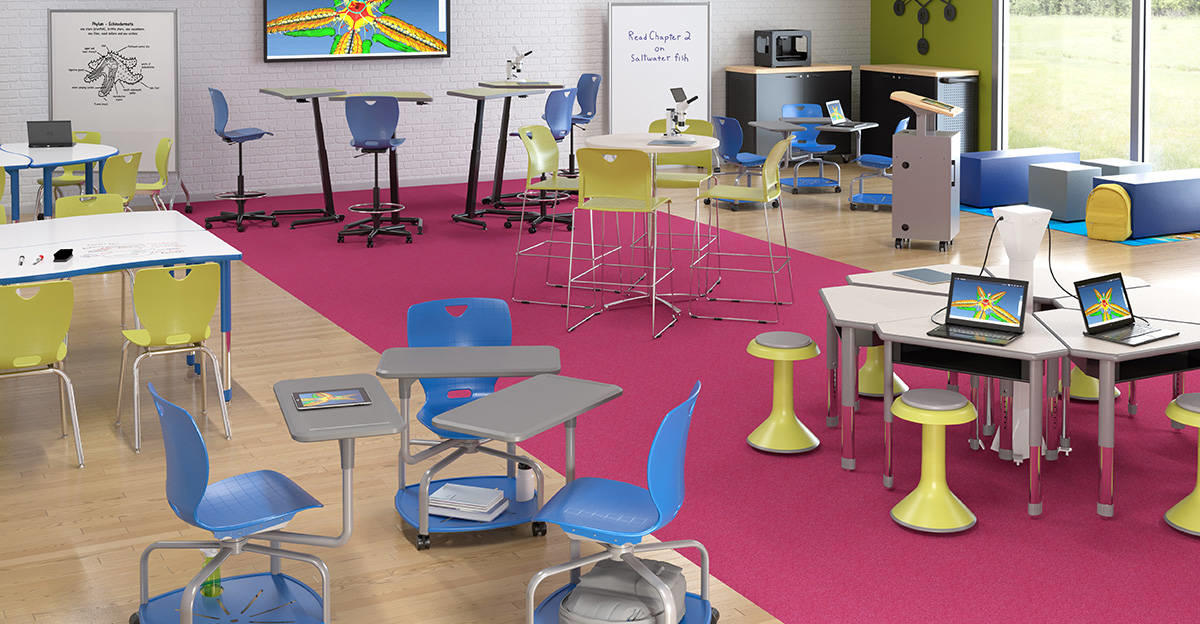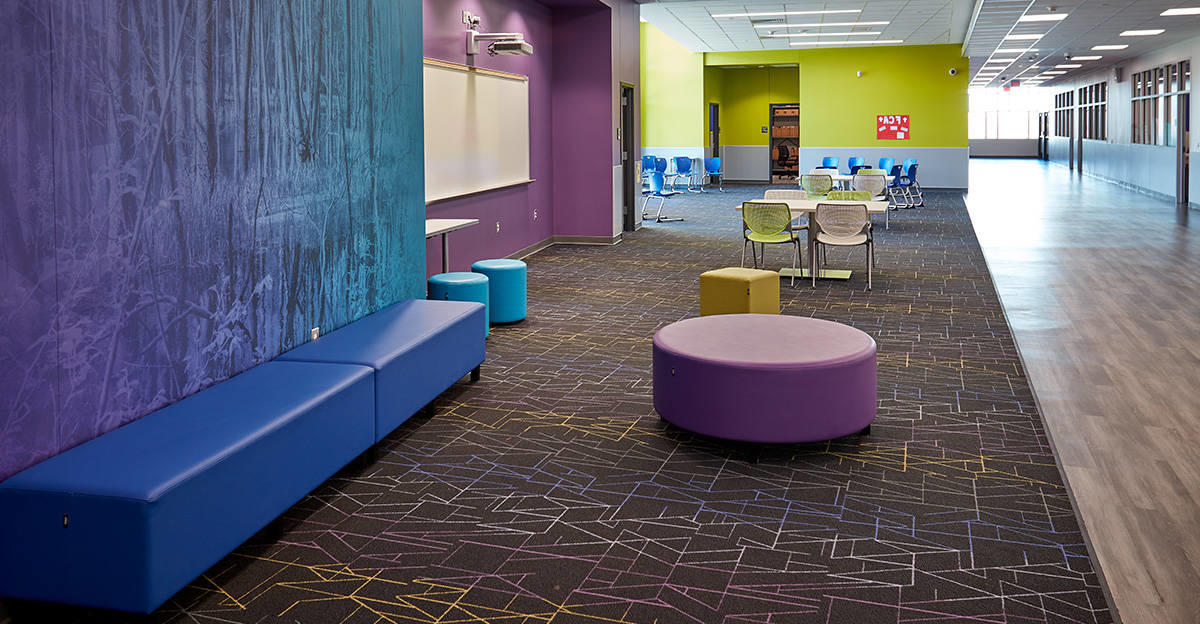It’s the dream scenario for every educator: Once class ends, students continue the discussion on their own outside the classroom—or maybe they’re so engaged by the topic that their curiosity is piqued and they want to look up more information for themselves.
Is your school building designed to support these continuous learning opportunities effectively?
If you limit your concept of a learning space only to classrooms, then you’re missing a key opportunity to extend learning throughout the building (and the school day). Non-instructional spaces such as cafeterias, common areas, and outdoor spaces can serve as natural extensions of the learning that occurs in classrooms. However, this is more likely to happen if these spaces are equipped with the right kinds of tools and furniture to support continuous learning.
Here are four critical design elements that can help turn non-instructional spaces into places where learning continues beyond the classroom.
Comfort
For students to continue the learning that just occurred in class, they need easily accessible places to sit down and talk, read, study, or look up information. These spaces, which can be hallways, large common areas, or even outdoor spaces, should be furnished with comfortable, appealing seating that draws students to the space and encourages them to stay and talk or do work between classes or after school.

Learning is largely a social activity, and K-12 leaders should create opportunities for students to gather in small groups, hang out, and engage in informal learning when they’re not in class.
Using soft lounge seating or café-style tables and chairs can make these areas comfortable places where students enjoy spending time. Students are more likely to continue academic conversations or reflect on what they’ve learned if they have a comfortable place to stop, hang out, and relax after class.
Flexibility
Informal learning spaces should be multipurpose spaces that can support many different kinds of activities and interactions. Some students might want to sit and read by themselves, for instance—while others might want to talk or work together in pairs or small groups.
Equipping these spaces with a variety of furniture types, or with agile, modular furniture that can be configured in multiple ways, allows for many uses.
Stimulation
Students are most likely to use non-instructional spaces as extensions of the classroom if they feel inspired to continue their learning. While much of that depends on the quality of instruction they receive in class, schools can help foster a continuous learning culture by making informal learning spaces intellectually engaging and stimulating.

For example, use furnishings, decorations, and age-appropriate tools or manipulatives that inspire curiosity in hallways and other common areas. Objects such as globes, maps, artwork, inventions, shelves of books, posters, inspiring quotes, dioramas, and displays of student work can encourage students to continually think, reflect, and explore.
Utility
For learning to occur anytime, anywhere, students need tools and materials to support their learning. These might be high-tech tools such as laptops, tablets, and interactive displays or low-tech tools such as whiteboards to jot down their ideas.

While digital devices bring an entire world of information to students’ fingertips, allowing students to learn from wherever they are, a dead battery renders this advantage useless. If you want non-instructional spaces to support continuous learning effectively, consider how these spaces will meet students’ power needs with strategically placed electrical outlets—such as outlets embedded within tables, chairs, and other furniture.
To learn more about designing a school library space that meets 21st-century learning goals, download our free guide “Learning Beyond the Classroom: How to Make Every Space A Learning Space” today.
Download the Free Guide





Leave a Reply